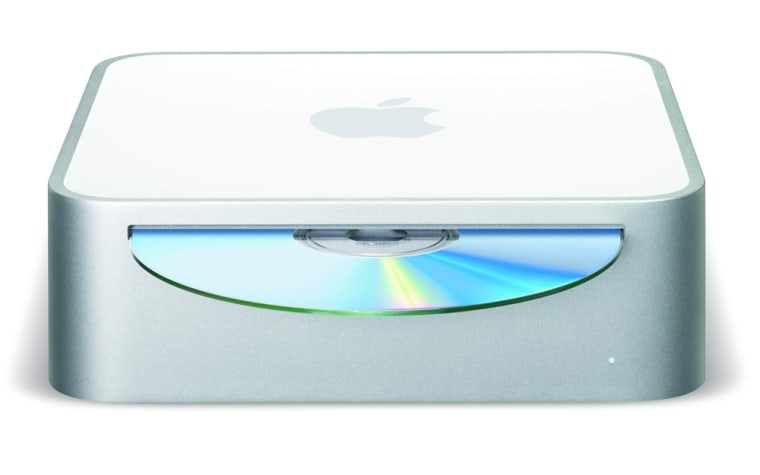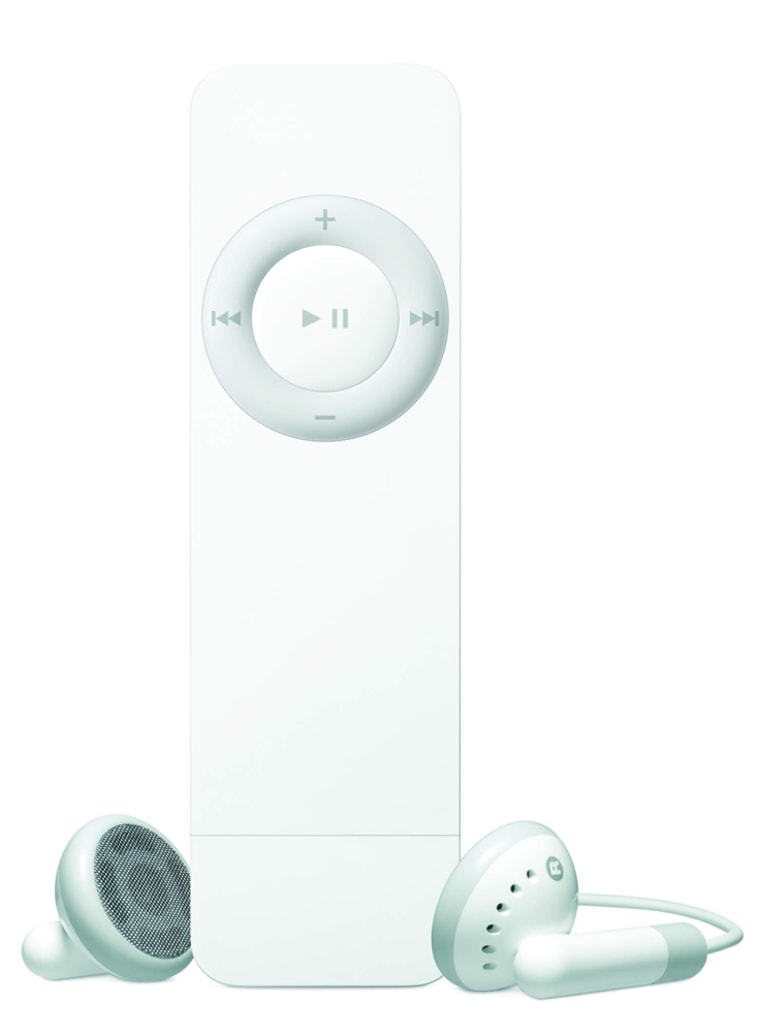Apple's recent unveiling of the iPod Shuffle and the Mac Mini caused a big stir and with good reason. There’s a lot more than meets the eye on both these "downsized" devices.
The iPod Shuffle is a little sliver of a portable music player. Unlike its bigger brothers, which use hard drives, the Shuffle stores music in flash memory: 512MB of storage for $99 or 1GB of storage for $149.
The Shuffle can hold up to 120 songs for the 512 model and 240 for the 1 gig device, presuming the songs run 4 minutes long and you rip your music at 128Kbps. For the best sound, I recommend you rip your songs at 320Kbps (MP3 or AAC) or in the WAV format. The Shuffle will hold a lot fewer songs – but they’ll sound a whole lot better.
Unfortunately, the Shuffle does not support Apple's new Lossless format, a form of compression that aims to keep as much song quality as possible. That's too bad: Stereophile magazine’s editor, John Atkinson, told me months ago that the Lossless format tests and sounds superb. The file sizes are bigger than AAC and MP3 files, but smaller than uncompressed WAVs.

Still, first word on the Shuffle from those who've gotten their hands on one is that it sounds absolutely fantastic -– with much better frequency response and more tuneful bass than its bigger brothers.
(At this point, I'd like to tell you what the Shuffle sounds like in my own tests, but I'm apparently on Apple's "do not call" list. Whether it's personal or has something to do with where I'm employed, Apple stopped sending me products to review years ago. That's a shame, since it prevents me from telling you in more detail just how terrific these new products are.)
While there’s no LCD screen to see what song is playing, the limited capacity of the Shuffle means you'll likely remember what songs you’ve transferred onto it. Apple named it the Shuffle because there’s a switch that lets you do just that -- shuffle the songs. It can help make listening more interesting when you don’t know which tune is coming next.
While the Shuffle itself is tiny (3.3 by 0.98 by 0.33 inches and 0.78 ounces), the provided lanyard and earphones add a bit more bulk than you might expect. Each offers about 12 hours of battery life and connects to your computer via a USB port. Note that your music cannot skip on a Shuffle because there are no moving parts involved.
Overall, Shuffle's best feature is its price. At $99 for 512MB and $149 for 1GB, Apple has totally neutralized the rest of the flash player industry. The iPod Shuffle is a stone-cold bargain. There is nothing that touches it, for the money, from any other manufacturer. For consumers, that is something to cheer about.
In the past, Apple took a lot of abuse for marketing "expensive" iPods and ignoring the low end of portable music playback market. No one can say that anymore. I expect Apple to corner that market in no time at all.
Small but big inside
As for their bare bones desktop, the Mini is anything but. Yes, it’s small in size (6.5 by 6.5 by 2 inches) but there’s a lot going on inside a box barely bigger than its CD/DVD loading slot.

The Mini comes in two configurations: with a 1.25 GHz G4 processor, 256 MB of memory, 40 GB hard drive and a Combo drive (CD and DVD playback and CD burner) for $499 – and with a 1.42 GHZ G4, and 80 GB hard drive for $599. Bumping the memory up to 512 MB (which I highly recommend as the minimum for any modern-day computer) runs $75 for either model.
At first, when I read the specs, I thought to myself that Apple was cheaping out by not including a keyboard or mouse. Over the years, Apple often has provided what appeared to be the absolute bare minimum of memory and hard drives for what they charged. The Mini is different.
Instead of mouse or keyboard (which you can purchase from Apple for $58; $99 for wireless models) Apple has included some interesting hardware inside that makes this little box something special.
With most bargain-basement computers that run Windows, the video controller you get inside is usually an afterthought. At best it’s a bottom-of-the-line card with a little memory. At worst, the video is integrated onto a board and the memory is shared with the processor.
Apple’s Mini comes standard with an ATI Radeon 9200 video board and 32MB of DDR video memory. That means this computer can handle a good sized monitor display with ease. Add to that the fact that the Mini’s video output is via a VGA port or an all-digital DVI connection, and you start to realize that Apple isn’t really skimping this time around.
As a matter of fact, there’s a lot of speculation about why Apple is providing such video support on the Mini. It could be for gamers. Or maybe the Mini will someday be marketed as a video hub, to distribute video (standard and high-definition) throughout the home. Don’t forget to add an Airport Extreme wireless networking card ($79) when you place your order. The Mini is also perfectly sized to morph into some kind of video set-top box.
I’m very excited about both these products. I think they’re both significant additions and signal that Apple is moving in the right direction.
